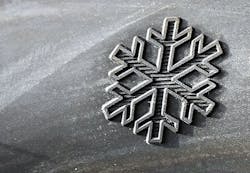Performance winter tires are the ideal choice for some, but not every, winter tire buyer. True to their name, performance winter tires provide greater handling and steering response on cold, damp and wet roads than studless ice and snow tires. And compared to all-season tires, performance winter tires provide better traction in snow, slush and ice.
But performance winter tires fall short of the snow and ice grip of studless ice and snow tires. “The outright snow and ice traction of a performance winter tire is not quite as good as a studless ice and snow tire,” says Woody Rogers, product information specialist at Tire Rack Inc.
So which option is best for a driver who wants extra comfort and safety in the cold months? The answer depends on the vehicle, the local climate and the customer’s driving style.
Performance versus mainstream
Drivers who put studless ice and snow tires on their cars give up a bit of the steering response and handling and the “connected driving feel” of a performance tire.
“The performance winter tire is geared around a more powerful, higher performing vehicle, or a driver who wants to retain more of the sporty handling of his or her vehicle when the roads are clear,” says Rogers.
Performance winter tires typically have higher speed ratings and tend to come in lower profile sizes, making them better suited for American muscle cars, European performance cars, Japanese sports cars and performance luxury cars such as higher-end Lexus, BMW, Audi, and larger Mercedes.
“Performance winter tires are definitely more for these performance vehicles and not the mainstream,” says Rogers. But manufacturers offer performance winter tires for some mainstream sedans. “I’d say it’s fifty-fifty as to more mainstream fitments,” says Rogers. “You may find there are both options available or you may find there’s only the studless tire.”
He notes that a performance winter tire has better snow and ice traction than an ultra-high performance all-season tire. Performance winter tires bear the three-peak mountain snowflake symbol that indicates the tires meet the U.S. Tire Manufacturers Association standards.
A performance climate
Most climates in the U.S. are what Rogers calls “performance climates,” where the roads are clear and wet during the winter months.
“You get icy patches, but it’s not like you are driving through slush and snow six days a week. As a general rule, more clear, dry and wet days, versus snowy days, shift you toward a performance winter tire.”
Ask what customers really want
As in all tire sales, the type of winter tire a dealer recommends to customers comes down to what they need for their style of driving, the kind of vehicle they have and the available fitments. But the difference between performance winter tires and studless ice and snow tires adds another layer to the buying decision.
“Do customers want maximum snow and ice traction or a balance of snow and ice traction plus clear road handling? That will help them decide between a studless ice and snow tire or a winter performance tire,” says Rogers.
If a customer wants something better than an all-season tire and is willing to give up some snow and ice traction in exchange for better handling on clear roads, the choice is the performance winter tire. ■
Performance winter tires: a subset of UHP
Tire Rack considers performance winter tires to be a subset of the UHP tire category. “We drop the ultra-high part of it because it is not ultra-high performance from a traditional perspective, which is the dry and wet traction side of the equation,” says Woody Rogers, product information specialist.
“Because of the step down in dry and wet performance for this performance winter segment versus ultra-high performance summer or all-season, I don’t know anyone who is bold enough to say a tire is ultra-high performance and winter at the same time.”
Although the snow performance of all-season tires as a whole is improving, they lack the ice traction of a dedicated winter tire. Performance winter tires have been improving in the snow, too, but to a smaller degree.
“The winter performance is very high even for performance winter tires, so tire manufacturers are making them quieter, improving the wet traction, and working on other aspects, like dry road steering response. And that’s true for both studless ice and snow tires as well as performance winter tires.”
If a customer wants something better than an all-season tire and is willing to give up some snow and ice traction in exchange for better handling on clear roads, the choice is the performance winter tire. ■





